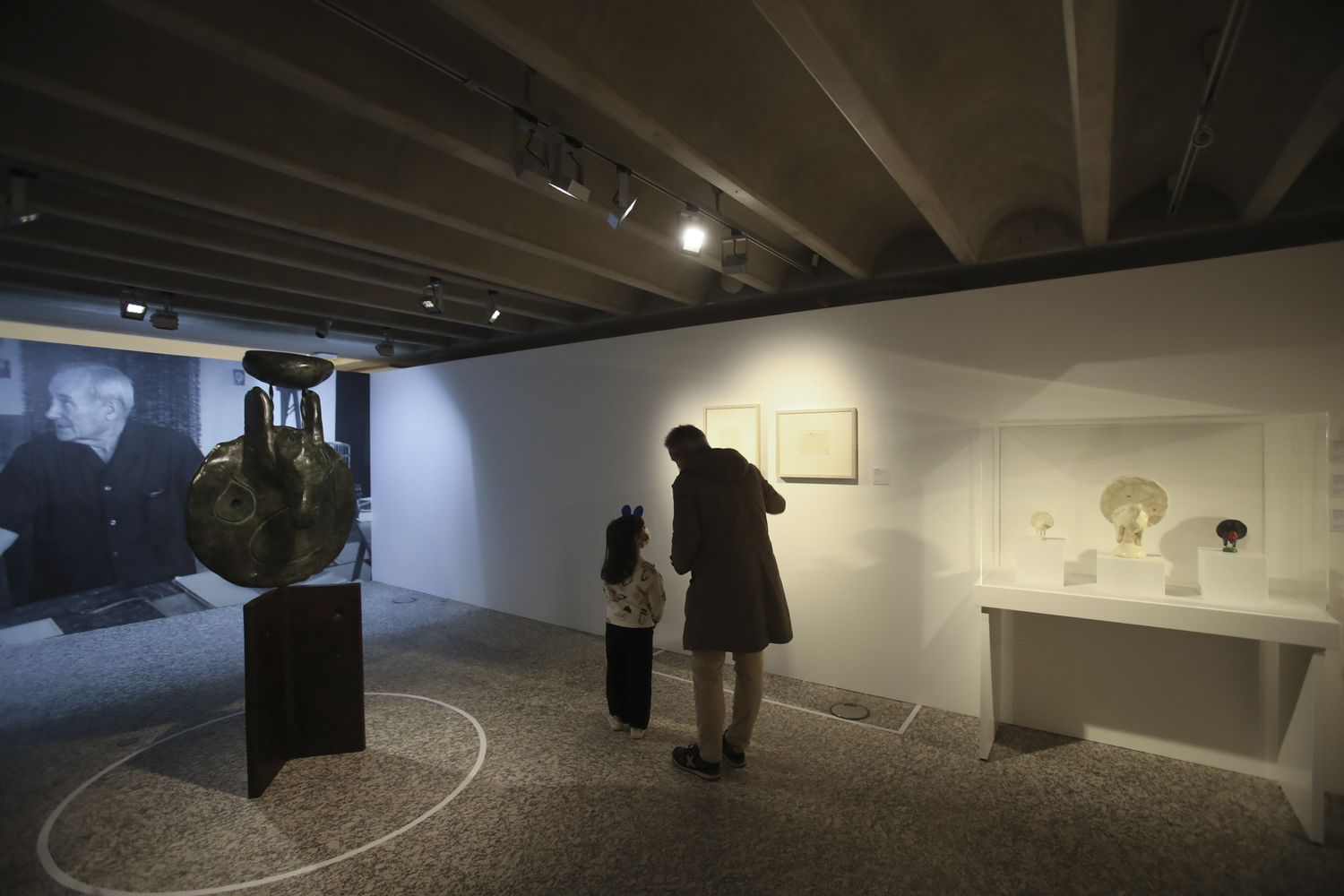On Christmas in the early seventies, while he was setting up the Nativity Scene in his family home in Mallorca, grandfather Joan Miró took one of the pieces into his pocket. The one chosen by the artist’s hand was a colored ceramic turkey that is traditionally used as a nativity scene in Mallorcan nativity scenes.
Over time, that 10-centimeter fowl became a bronze woman’s head and two meters high. “My grandfather knew how to transform objects with a magnetic soul”, recalls half a century later Joan Punyet Miró (Palma de Mallorca, 1968), who as a child witnessed that Christmas scene from which the sculpture Tête de femme / Head of a woman was born in 1974 .
This childhood memory of Punyet has inspired an unprecedented space that can be visited since last Saturday in A Coruña. The Barrié Foundation has opened the Miró exhibition at its headquarters in Coruña .
A collection , which includes a room in which all the steps taken by Miró’s genius to illuminate the Head of a Woman are revealed , from the ceramic turkey, through the preparatory drawings and the plaster sketches and reaching the final sculpture.
Around this space that shows his creative process hang 47 paintings that the painter, sculptor, engraver and ceramist who died in 1983 at the age of 90 created in the last two decades of his life, the vast majority coming from the Miró Space of the Mapfre Foundation in Madrid.
Punyet Miró, head of the Sucessió Miró entity that manages the Catalan artist’s creations, believes that this figure of the family nativity scene that ended up becoming an art of universal projection reflects well his grandfather’s gift to “create links of poetic action” with objects that attracted him .
They could be stones and shells that he collected during his walks in Mallorca, a bone or a simple almond. He deposited them in his workshop and, at a certain moment and in some way, they ended up embedded in one of his works.
Through the paintings exhibited in the Barrié, visitors will be able to discover a “mature Miró, who experimented with many materials and who achieved a great moment of freedom when he was between 60 and 70 years old,” says the artist’s grandson. That stage was especially “transgressive and revolutionary thanks to poetry” for Miró.
His last period is the least known and has only recently begun to attract the attention of critics, point out those responsible for the Barrié Foundation. For someone who has been one of the most influential artists of the 20th century, age did not prevent him from renewing himself, quite the contrary.
Starting in 1960, at almost 70 years old, the consecrated genius launched himself into researching new materials and let himself be carried away by intuition “without any fear of negative criticism,” explains his grandson. The works exhibited at the Barrié sprout on a torn canvas, burlap, cardboard or tablet. They are the result of a more introspective time, of a kind of reflection on his entire career.
The exhibition is divided into several sections that cover the themes that most interested Miró since its inception and that were also present in his last decades, although with variations.
In Mujeres, Pájaros, Estrellas , for example, these motifs are a pretext to explore the gestures in the painting, alternating the thick lines with the arabesques, the curves and the dripping of drops that the acrylic leaves on the canvas. And the strange creatures that populate the Las Cabezas section illustrate the purification undertaken by the artist from the sixties.
The exhibition also reserves space for his pictorial crimes , those that Miró perpetrated after publicly proclaiming his desire to “assassinate painting.” The Barrié exhibition includes four of the ten works with which the artist pursued his own metaphor. These are street market paintings by unknown authors on which he intervened with his unmistakable pictorial style.
Some of the works that will be exhibited in A Coruña with free admission until May 16 have a QR code through which you can virtually connect with the artist’s grandson. Punyet Miró acts as an exceptional guide in some short videos in which he explains to the visitor the meaning and importance of the painting before his eyes.
Miró was “a born provocateur,” recalls his grandson. After his death in 1983, Punyet Miró collected anecdotes about his grandfather’s intense life touring the foundries with which he had worked to shape his works. In one of them, the workers told him that there was a day in 1974 in which the artist appeared in Rolls Royce and dressed in a tailored suit. He came to reveal the details of his next sculpture. To his bewilderment, he produced a ceramic turkey from his pocket.
The Great Writer and The Passionate Poet As Well, He Graduated from University Of Florida in Journalism and Brad have around 12 years of experience in news and media section.

